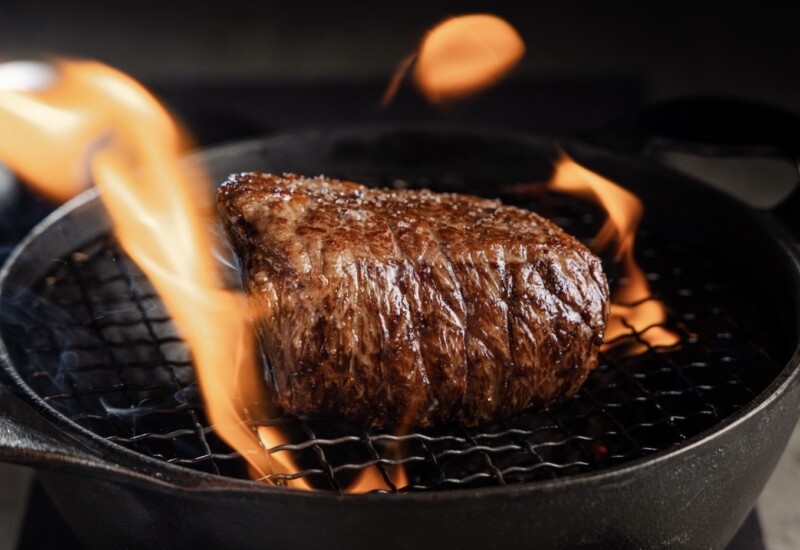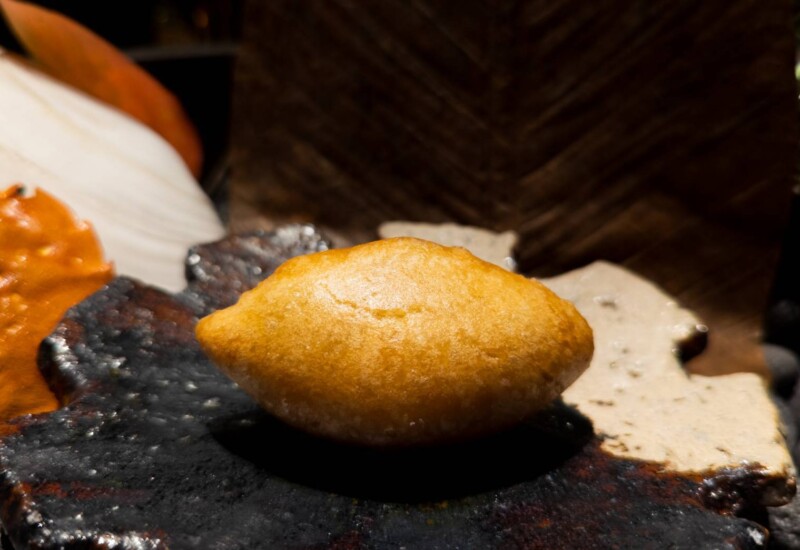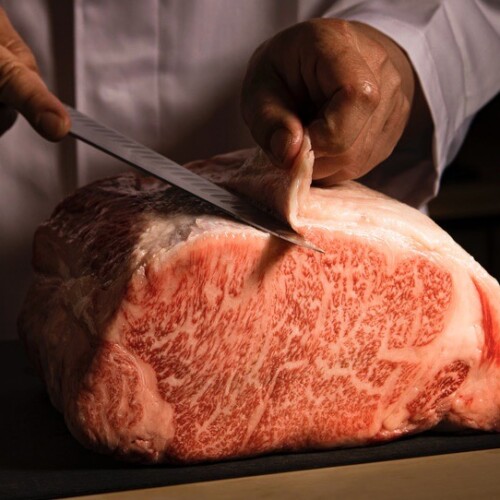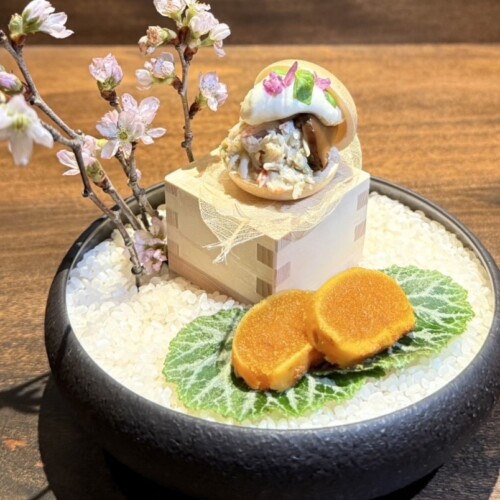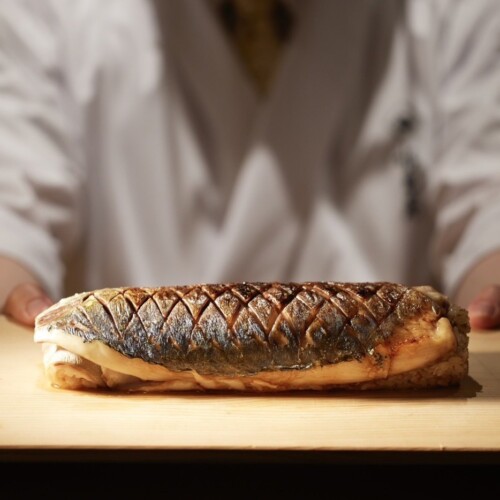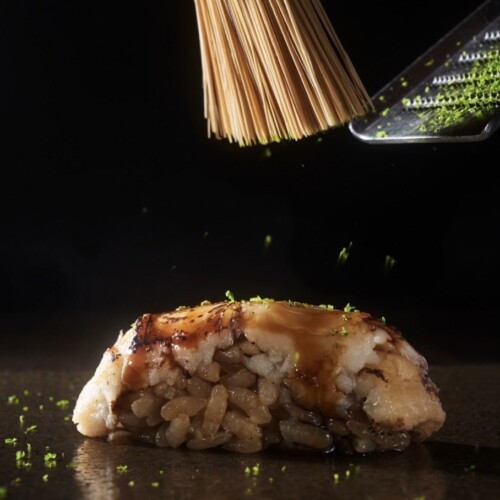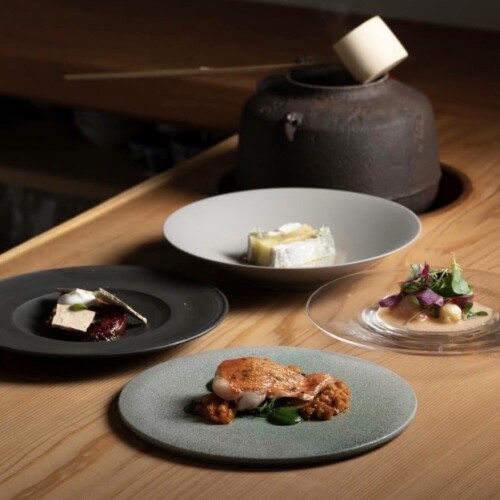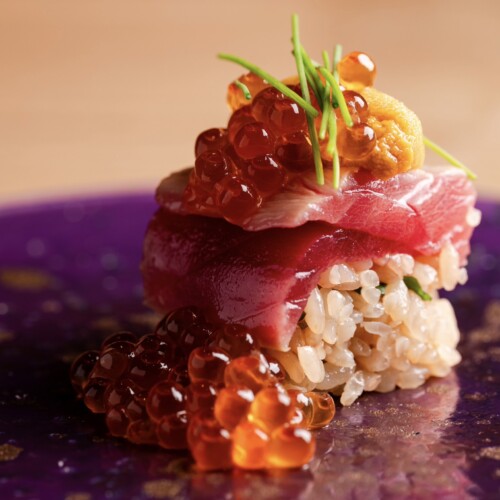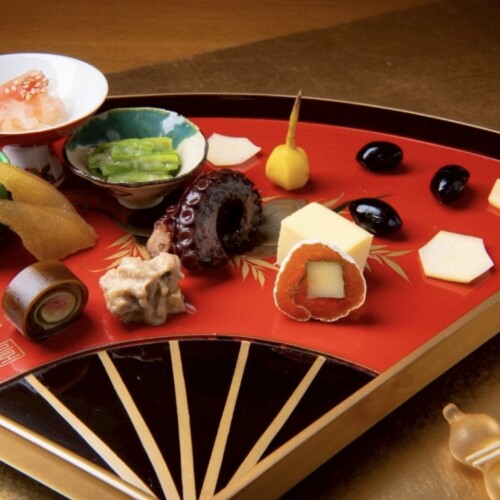銀座 鼓門 / Ginza Komon
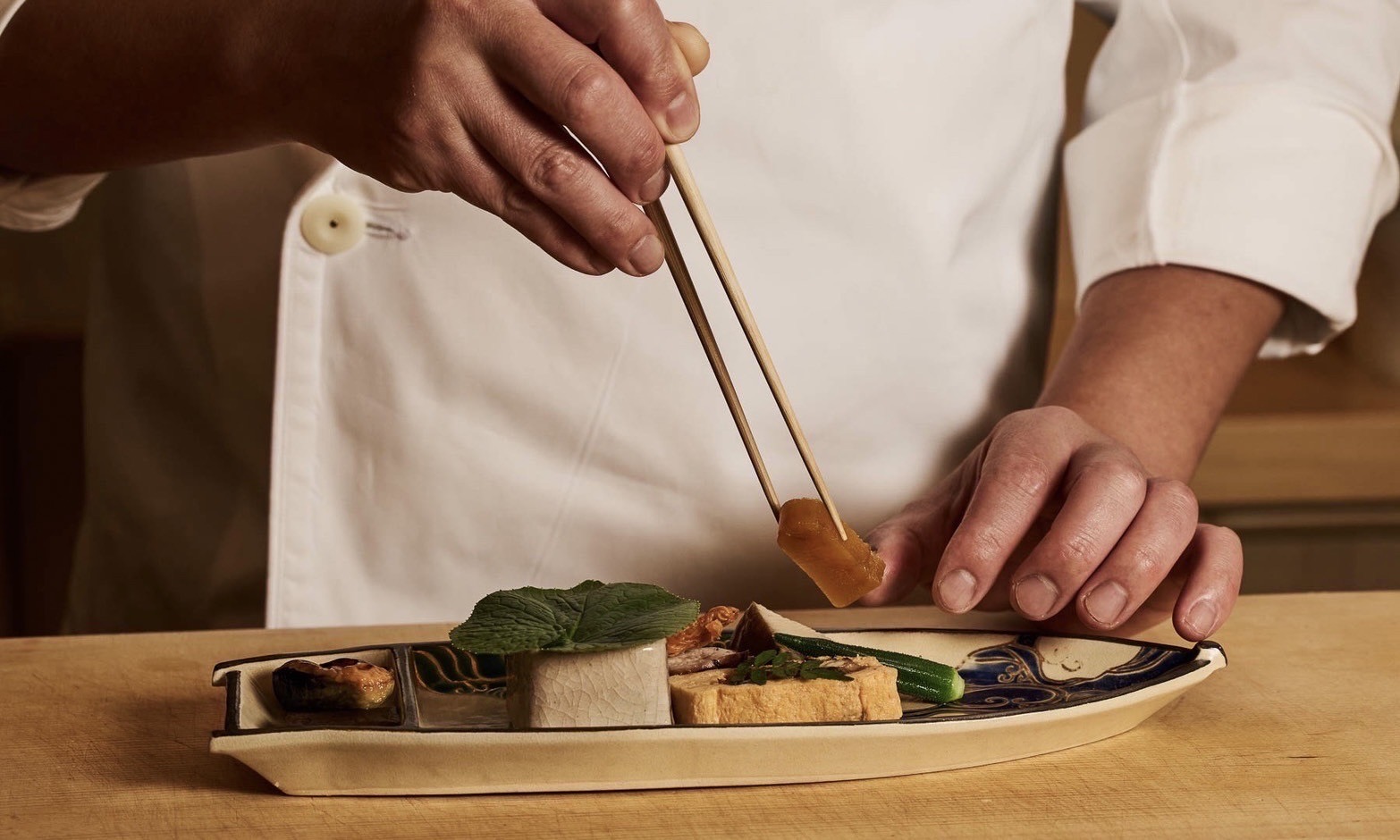
①Please introduce your restaurant.
My name is Kotaro Asakura, and I’m the owner of Ginza Komon.
Ginza Komon originally began as an izakaya in Kugayama, a neighborhood in Suginami Ward.
We opened under the name “Kirakutei,” with a concept centered on the enjoyment of Japanese sake. We sourced a variety of ingredients and delicacies from across Japan, prepared them in-house, and created a space where guests could appreciate the harmony between food and sake.
We later opened a branch in Ginza as “Ginza Kirakutei,” and two years after that, we launched a new establishment—Ginza Komon—as a refined Japanese restaurant.
Thank you, and I look forward to welcoming you.
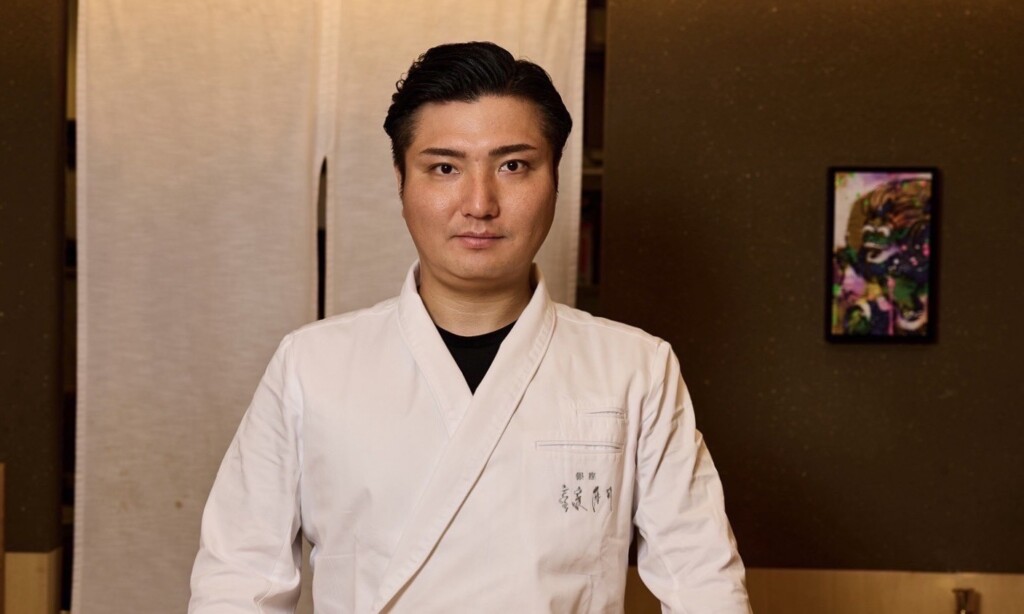
②What values or principles are most important to you as a restaurant?
In Ginza, where many people dine out regularly, it’s common to encounter the same seasonal ingredients across different restaurants. We focus on providing unique, unexpected approaches that make even familiar ingredients feel fresh again—offering experiences that only we can create.
Our goal is not to be eccentric for the sake of it—we dig deep into each ingredient, understand its nature, and bring out its best so that it pairs seamlessly with wine, sake, or even non-alcoholic options.
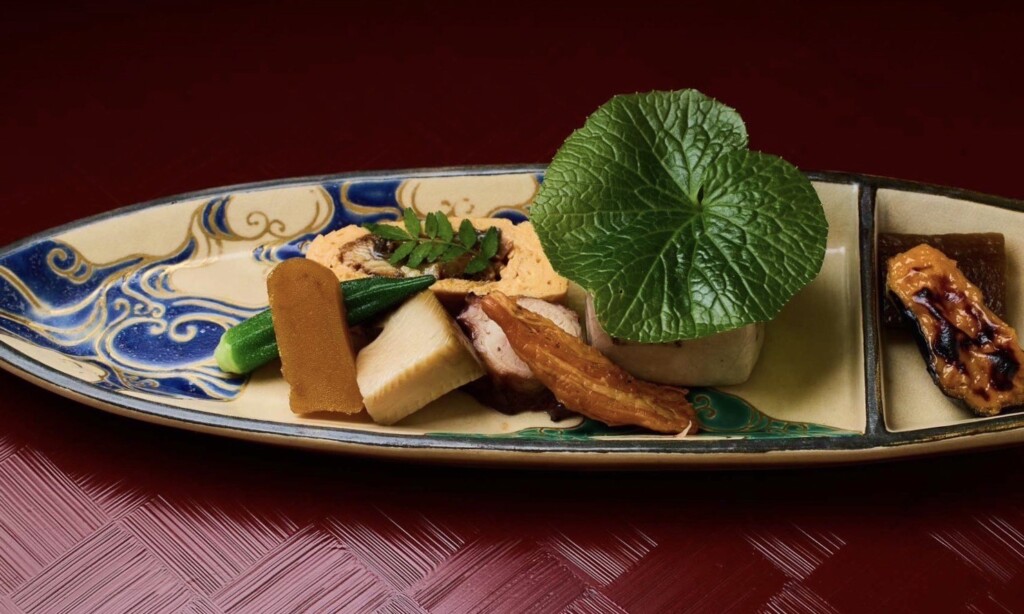
③ How do you select your ingredients, and what do you prioritize when sourcing them?
Right now, it’s asparagus season. We visit Jet Farm in Assabu, Hokkaido, run by Mr. Hasegawa. We examine everything from the soil up and learn firsthand what makes their asparagus exceptional. We taste it together with the farmers, bring that shared sense of flavor and joy back with us, and then analyze it in our kitchen before presenting it to our guests as a refined dish.
Without quality ingredients, there is no cuisine. That’s why we face each ingredient with sincerity—understanding its essence, translating that into a dish, and sharing it with our guests.
As a Japanese restaurant, our mission is to elevate the natural character of each ingredient while ensuring the experience is both delicious and enjoyable.
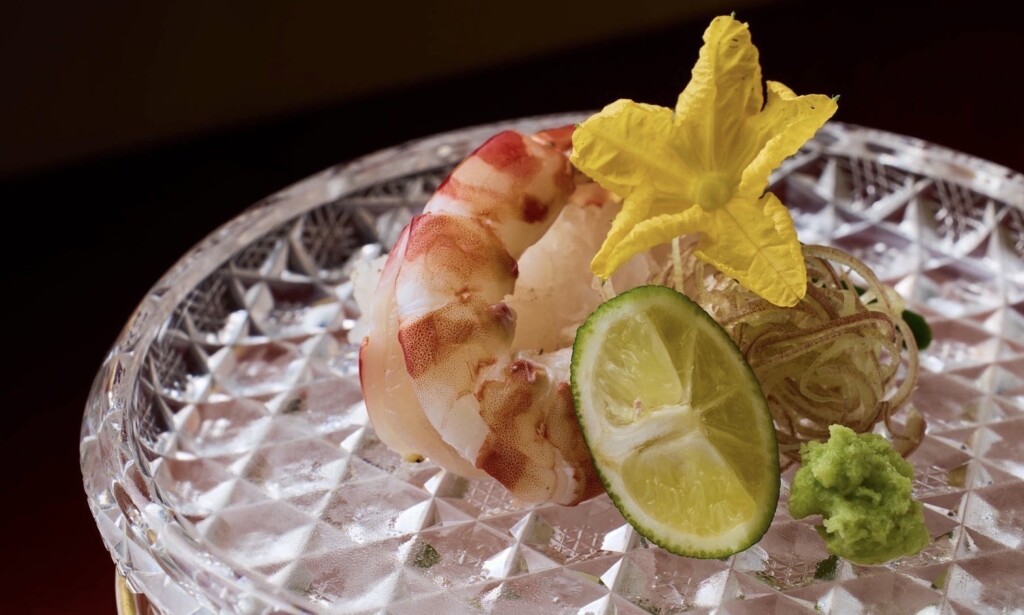
④ What makes your restaurant unique compared to others?
For us, sourcing is all about direct relationships with producers.
We work directly with sake breweries and distributors, and for wine, with reputable importers. Through these trusted relationships, we ensure that everything we serve is authentic and of the highest quality. It’s this mutual trust that allows us to offer our drinks with true confidence.
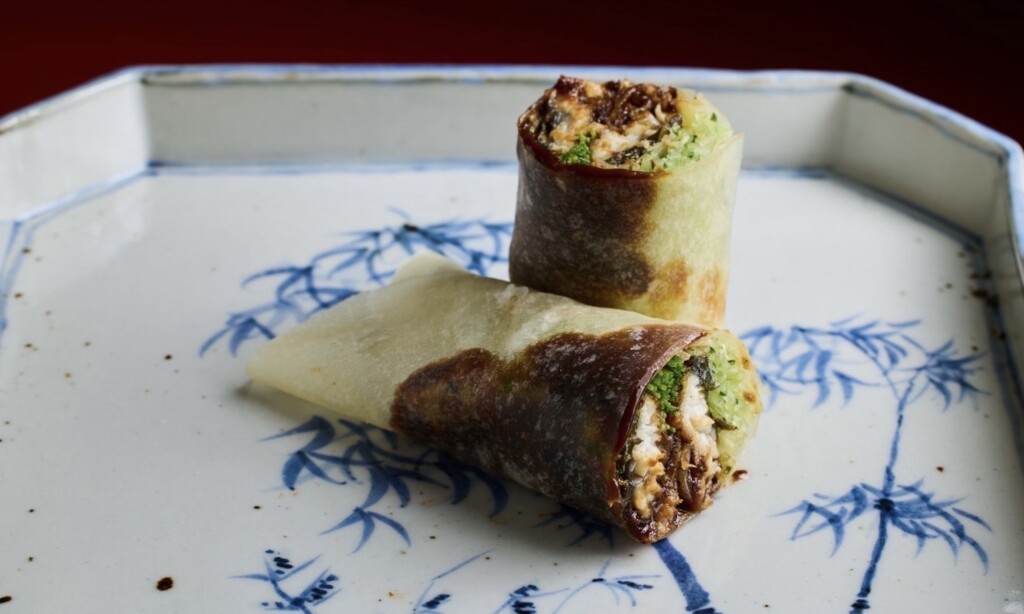
⑤Do you have any particular approach or philosophy when it comes to plating and presentation?
If ingredients are like people, then plates are like their clothing. With that in mind, we consider things like—what kind of plate suits this ingredient? What colors complement it? These may seem like obvious details, but we pay close attention to them when plating each dish.
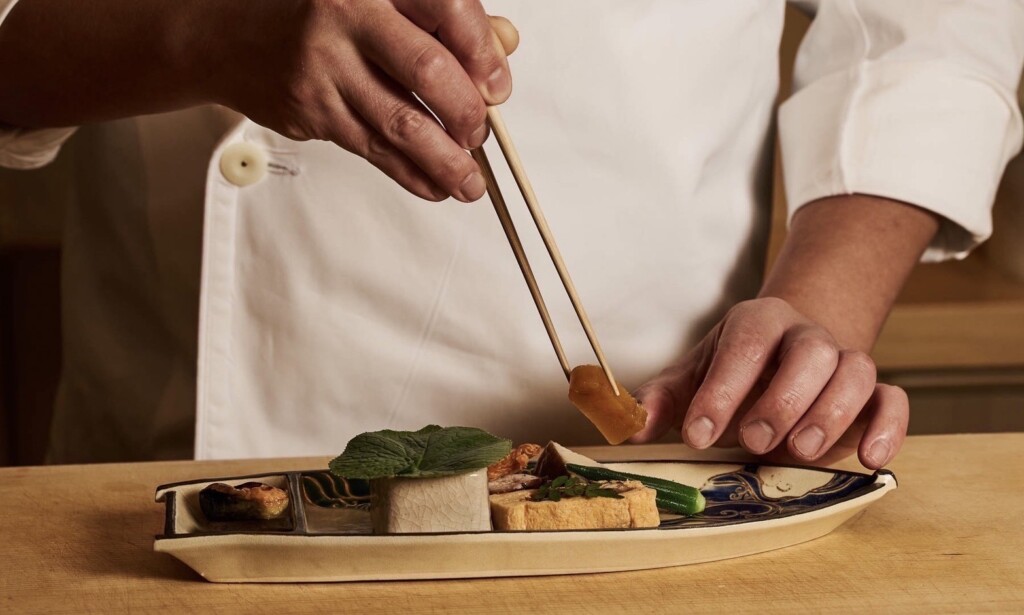

⑥ How do you curate your selection of alcoholic beverages?
I’ve loved sake since I was 20 years old. Because of my work, I’ve spent many years closely connected with sake brewers, learning from them and sharing their sake.
Based on my experience, I carefully select the kinds of sake I believe our guests will truly enjoy.
My choices might be a bit personal, but we mainly carry clean, elegant sake—free from any unwanted off-flavors.
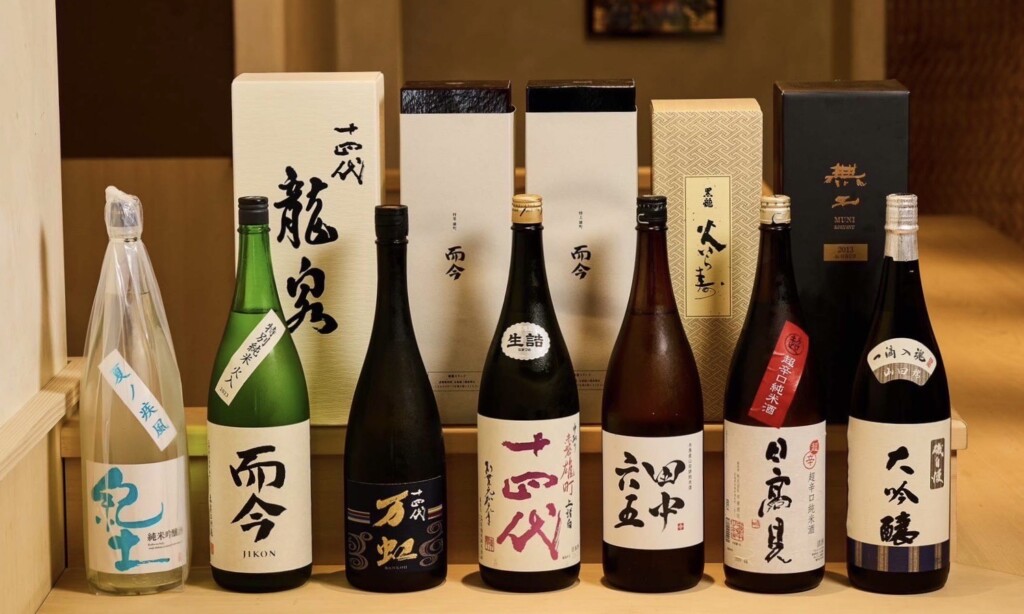
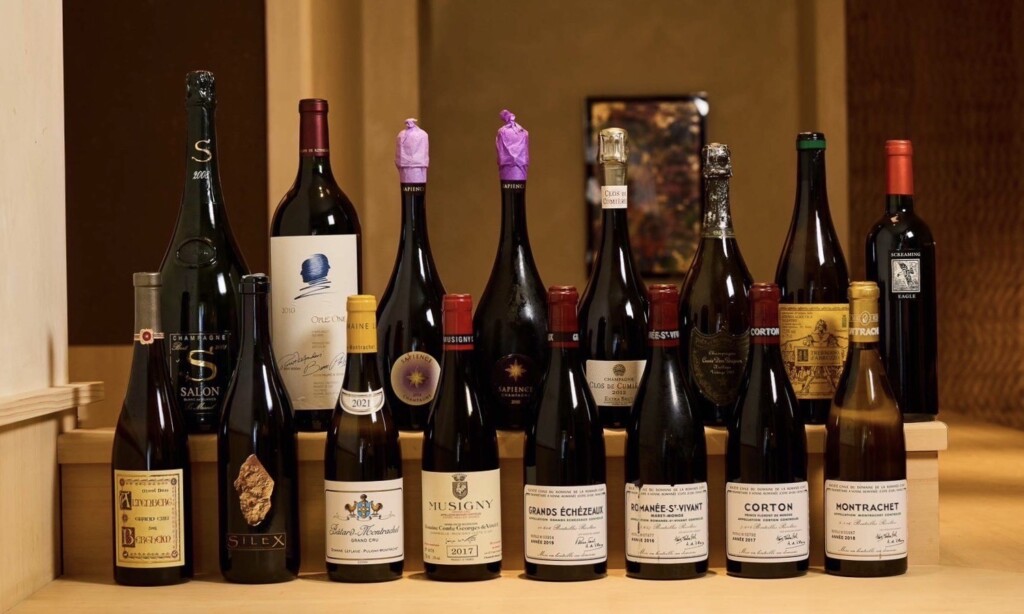
One sake I truly love is called Jikon.
It’s a globally acclaimed sake, crafted by Mr. Onishi, with whom I’ve had a relationship for nearly 20 years. It’s the kind of sake that really doesn’t need much introduction—just try it, and you’ll understand.
We source this sake through official channels, so we’re able to offer it at a fair and honest price.
It’s rare to find it consistently available, but we make sure to always have some form of Jikon on hand.
There’s a wide range—from premium Junmai Daiginjo to more approachable types—and we carry options that are easy to enjoy without breaking the bank.
What makes this sake so special? In one word: it’s beautiful.
In Japanese, the word for “delicious” can also be interpreted as “beautiful taste.” There’s a difference between richness of flavor and sheer elegance—and Jikon is, to me, the latter. It’s beauty in liquid form.
It’s like dashi in Japanese cuisine—removing all the noise, leaving only umami behind.
That level of precision and balance is exactly how Jikon is crafted.
I’ve visited the brewery many times, and every year they reinvest in improving their facilities to produce sake of even higher precision and quality. They never settle—they’re always evolving to offer the best possible Jikon to their customers.
It’s an incredible sake to enjoy during a meal, but even on its own, it’s nothing short of exceptional.
To be honest, it’s my absolute favorite.
I truly hope you’ll try it when you visit our restaurant.
Many of the dishes I create are inspired by this sake, Jikon, so I hope you enjoy experiencing how the flavors complement each other.

The next sake is called Gorin, produced by Shata Shuzo in Ishikawa Prefecture. I’ve had a long-standing relationship with this brewery, and it was actually the very first sake brewery I ever visited.
My love for sake began with their Tengumai, a rich and full-bodied yamahai-junmai that features a distinct acidity.
About ten years ago, they launched the Gorin brand. It pairs well with a wide range of dishes, but thanks to its bold structure and vibrant acidity, it’s particularly well-suited for grilled items and dishes with richer oils.
This sake holds deep personal meaning for me—Shata Shuzo was where I first fell in love with sake, and it represents the very beginning of my journey.
It’s a completely different style from the previous sake, but I’d love for you to try it and discover just how diverse and nuanced the world of sake can be.
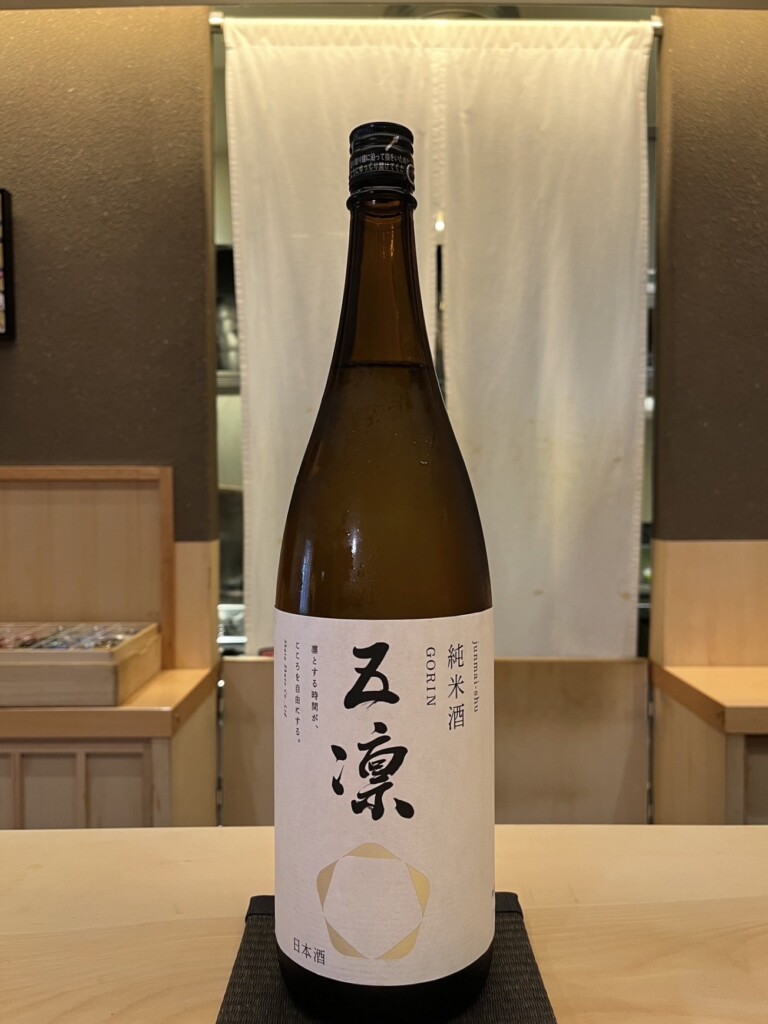
This sake is only available by the bottle and only when we’re able to secure limited stock.
If you’re interested, please let us know. It is quite expensive, but also exceptionally rare—something you won’t easily find elsewhere. That’s exactly why we make it available.
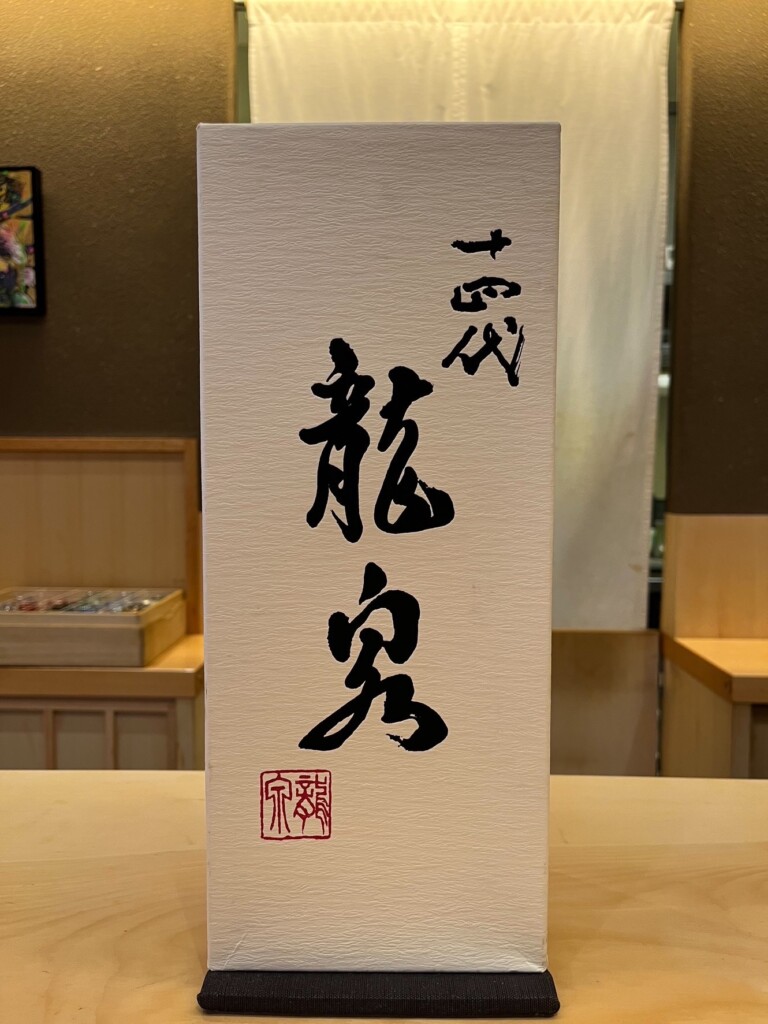
What I’d like to convey is that our sake selection spans the entire spectrum—from everyday sakes to exceptional, premium bottles.
You can enjoy a diverse range of sake here, from affordable options to high-end expressions.
All of our bottles are officially sourced, so their quality and condition are consistently excellent.
We serve each one with confidence and pride, and we hope you thoroughly enjoy the experience.
⑦ Can you tell us about your attention to interior design, tableware, and the overall dining atmosphere?
As for the interior, I personally love plaster walls. While I do find the classic wooden, traditional-style Japanese restaurant aesthetic very appealing…
I decided to use Italian plaster instead. The combination of warm white plaster with wooden accents creates a softer, more welcoming atmosphere, which is the kind of space I wanted to offer.
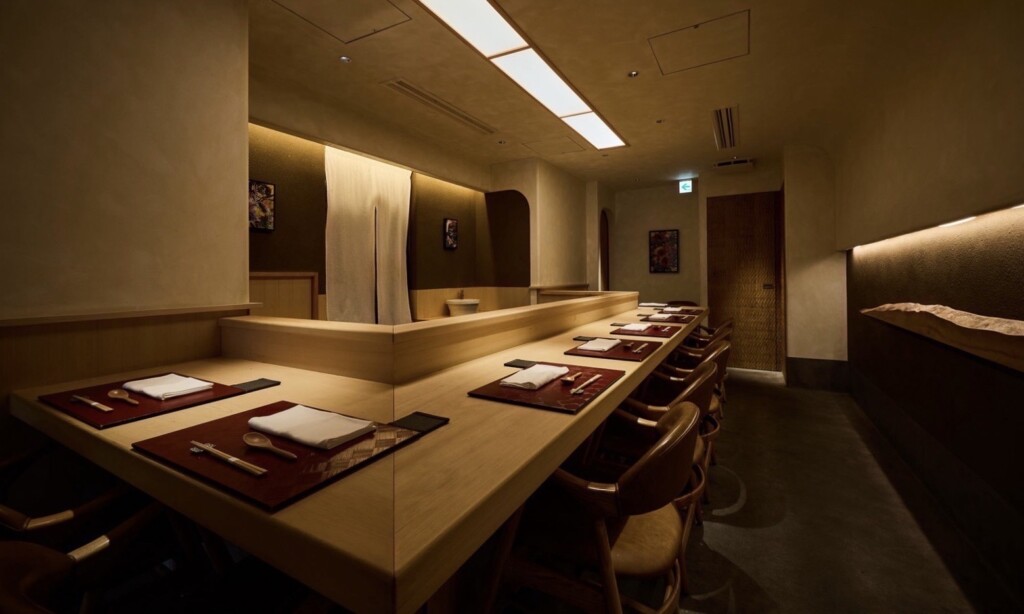

⑧ What inspired you to become a chef?
After I began cooking, I quickly fell in love with Japanese sake.
There’s a special kind of happiness that comes from enjoying great sake with delicious food—I wanted to share that feeling with others.
I hoped to bring that same sense of joy and wonder to our guests. That desire grew stronger over time and eventually led me to move from Suginami to Ginza.
⑨ What kind of guests would you like to welcome?
I’d love to meet all kinds of people—especially those who love good food and drink. If that sounds like you, I think you’ll really enjoy what we offer.
Our concept is built around the joy of pairing food with sake.
Of course, tea is perfectly fine too. But even if just a little, I’d be delighted if you felt curious enough to try some sake.
Ultimately, I’d be thrilled if you came with the spirit of simply wanting to experience sake—just a little—and share that enjoyment together.
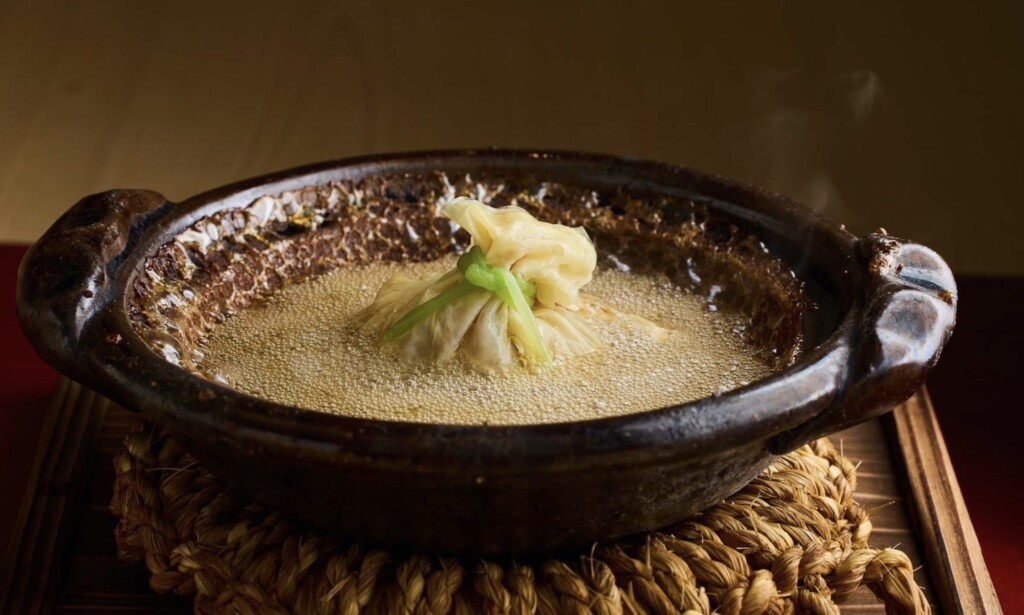
⑩ Are there any rules or things that are not allowed in your restaurant?
We kindly ask guests to refrain from wearing strong perfumes.
Smoking is not permitted at all.
Japan has its own unique culture, just as every country does. As long as everyone observes a basic level of courtesy and respect, that’s more than enough for us.
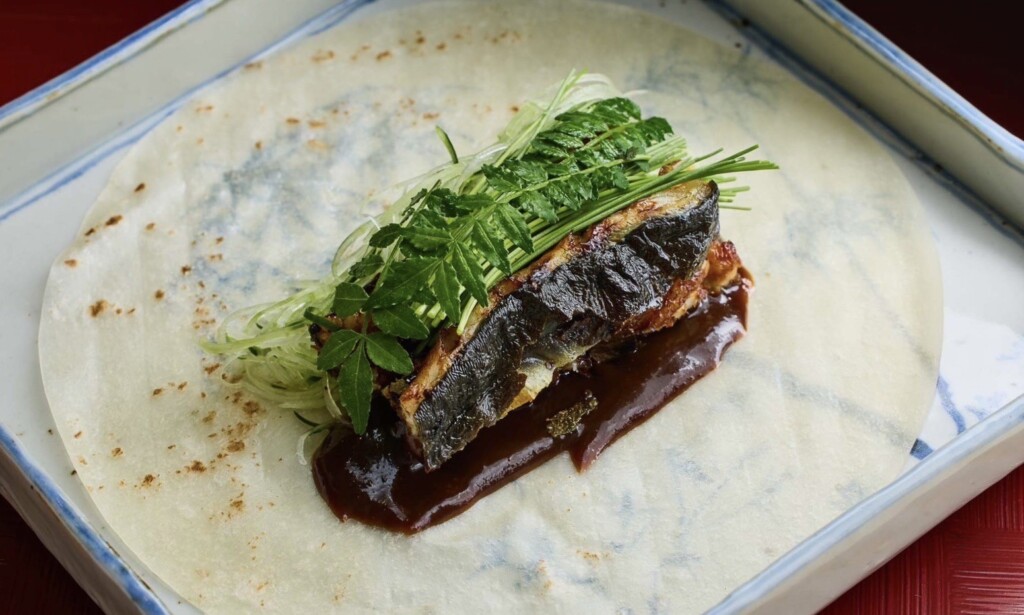
⑪Do you have a message you'd like to share with your guests?
Of course, we serve fish as part of our Japanese cuisine.
We also offer vegetables and meat.
With seasonal ingredients featured throughout the year, I believe our guests can experience a broad and approachable introduction to the richness of Japanese ingredients in just a single meal.
If you’re able to enjoy that experience, nothing would make me happier.
Being in Ginza, we’re close to many hotels—so even if you leave with a happy buzz, you can easily get back to your room.
I hope you enjoy your time here. Thank you very much for listening, and I look forward to welcoming you.




